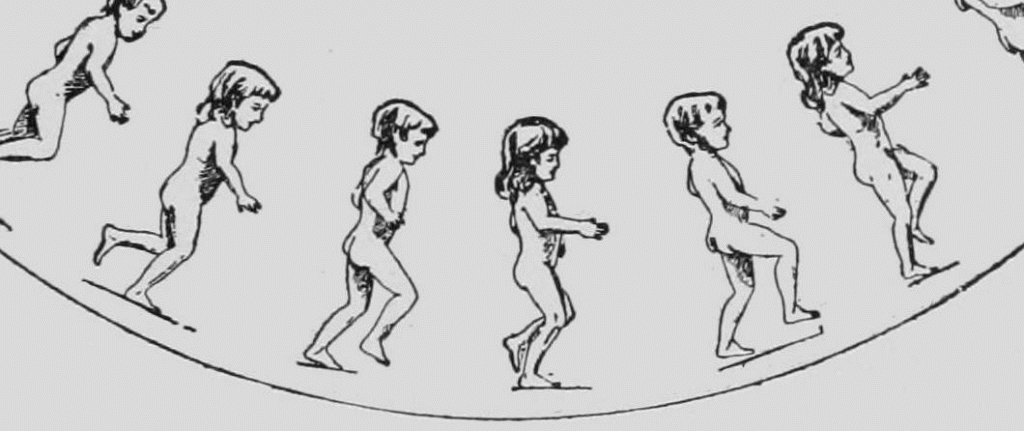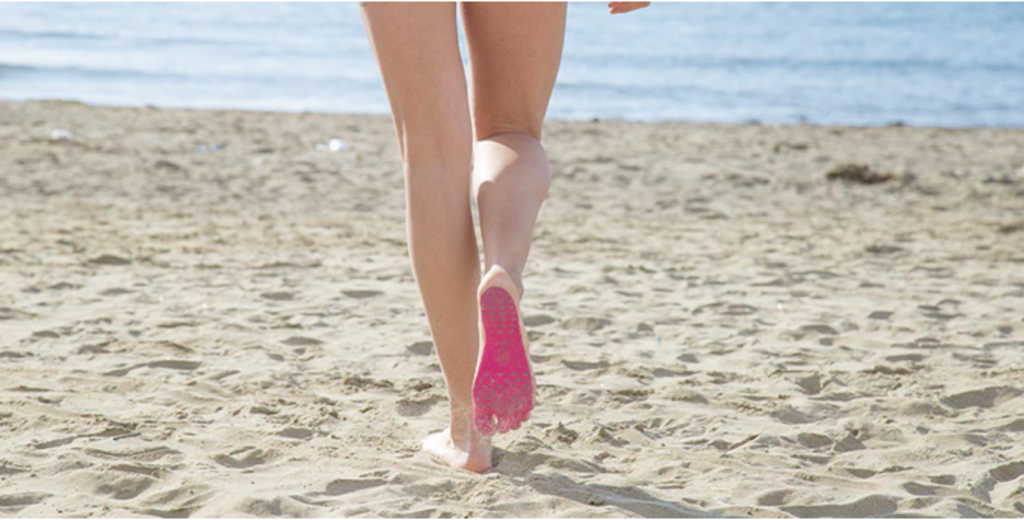Finally, a Low-waste True Barefoot Solution for All Your Movement
FitnessTech May 27, 2025 Damon Mitchell
The Italian company, Sabato Alterio is crushing their Kickstarter goal 14 times over and they still have a few days left. What they’ve created, called Nakedfit, will serve many masters in this crazy world.
Nakedfit is a stick-on-peel-off foot covering, which protects the bottom of one’s foot from the elements, all while preserving the natural movement of the foot.
The Sabato Alterio team has taken the concept of barefooting to the very last stage before actual bare feet. While some purists might argue, just go bare, that might be too much for most people.
Nakedfit takes a simple but brilliant swipe at normalizing what should otherwise be normal; walking around barefooted.
Barefoot Movement
The modern barefoot movement, if we could call it that, started in the 1960s. It asked the question: why do we need all these fancy soles? It’s a complicated and debatable subject, with lots of finger pointing and many treatises on the school of shod.
Some blame Nike. Others blame the podiatrists. Still some blame natural phenomena like the weather or horseback riding.
However it came to pass, somewhere along the line, sapiens decided life could not go on without two-inch heels attached to our feet. In some cases, our shoes have more than two-inches. (I’m looking at you women’s footwear.)
The Barefooters ask, why? The animals don’t wear shoes. They don’t run heel first. The problem is less about or shoes and more about our running style, the heel strike. In fairness, it’s kind of a chicken and egg situation.
Modern running shoes, the non-barefoot versions, force our stride into a heel strike. It’s near-impossible to run any other way in a regular runner. Before the advent of modern footwear options, one had to go it unshod.
The first competitive barefoot runners in modern Western history came about in the 1960s and 70s.
Abebe Bikila won the Olympic marathon in 1960 running barefoot, the same way he trained, then did it again four years later. Bruce Tulloh, a British runner, often competed in his bare feet in the 60s. Indian runner, Shivnath Singh ran long distance in the 70s with only tape on his feet. The list goes on.
Barefooters would argue that humans have run for tens of thousands of years without foam-padded heels, that the best runners in history did not have Nike shoes.
The Zero Drop Movement
In more recent history, companies like Vibram (a shoe soles company cum shoemaker), Vivobarefoot, and more popular brands like New Balance have come out with what they call “zero-drop” shoes. These are shoes balance the height of the heel and forefoot on the ground.
The popularity of these shoes has been strong enough to warrant entries from even bigger brands, like Adidas, and Nike. Most brands now make and sell a barefoot or zero=drop shoe.
In the last two decades, the rise in popularity has caused problems along the way.
The backlash comes from all sides, podiatrists wagging their fingers as clients pile into waiting rooms with broken feet and joint issues. Shoe companies have been as neutral as they can, but the dominant shoe out there is still has a big heel.
The problem with the barefoot movement has been ignorance. One cannot simply strap on a zero-drop shoe then take off heel striking. Even if that runner is hip to the need for a stride change, making such changes as an adult means going against a lifetime of habit.
Everything we do rests on our stride, running or walking. It’s the hardest movement to change. The failure rate for change is high, even of those who eventually adapt with their injuries.
The advocates for the movement lobby that we have to start with children. The evidence suggests that once we strap those kids into shoes, their strides shift from a mid-sole strike to a heel strike.
The Nakedfit Movement
To call it a movement is a little premature, but it could be. For the weekend warrior who runs barefoot, Nakedfit could keep her supple feet from ripping all while liberating her from the trappings of shoes.
The Nakedfit sticks to the bottom of one’s feet like a flexible sticker, a calloused bottom without all the actual skin callouses.
Gyms, of course, will have a problem with this movement. They don’t like seeing toes because toes mean injuries, and injuries mean lost money.
The Nakedfits stay on one’s feet until she wants to remove them. In theory, one could slap these on under her socks, then disrobe to go it bare. They stay on for about 24 hours.
They are waterproof, which includes salt water so a trip to the beach for surfing could mean not leaving one’s flip-flops on the sand for thieves. They’re also cut-proof, anti-slip, and comfortable.
The Green Movement
Speaking off flip flops, and shoes too, the amount of waste contributed to our landfills from discarded footwear is enough to make anyone scream “Greenpeace!”
The data is tough to verify, but do the quick math on your own show disposal. This writer trashes at least 4 pairs of plastic flip flops per year and one pair of runners (New Balance Minimus, of course).
There are over 7-billion people on the planet, and while footwear is a problem in much of the undeveloped world, a lot of those people wear and dispose of shoes. Add to that, it’s not only about the landfill but the glues and materials that make up that fill.
It’s a problem. Nakedfit could solve that big time.
It seems that as a transition to pure barefooting, the Nakedfit would help. For most, however, they will serve as the solution for many of the above-listed scenarios.
What will be truly amazing is when they figure out how to make a washable, reusable version. For now, they are as recyclable as a medical patch.
Check out the Nakedfit promo video:



